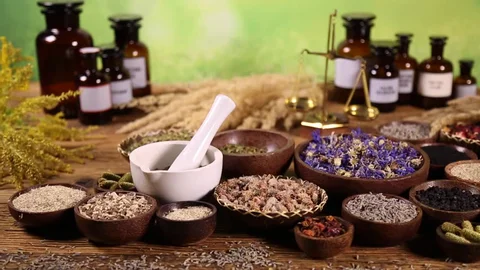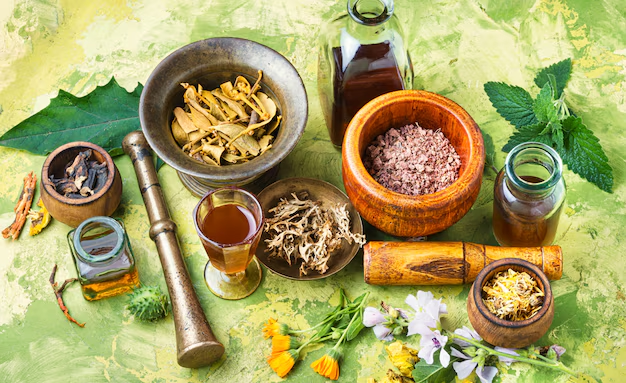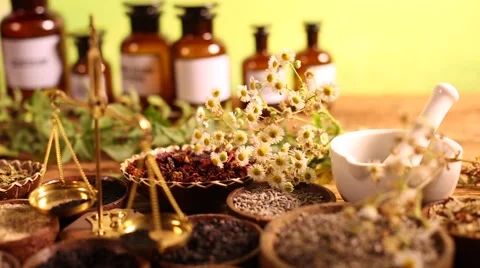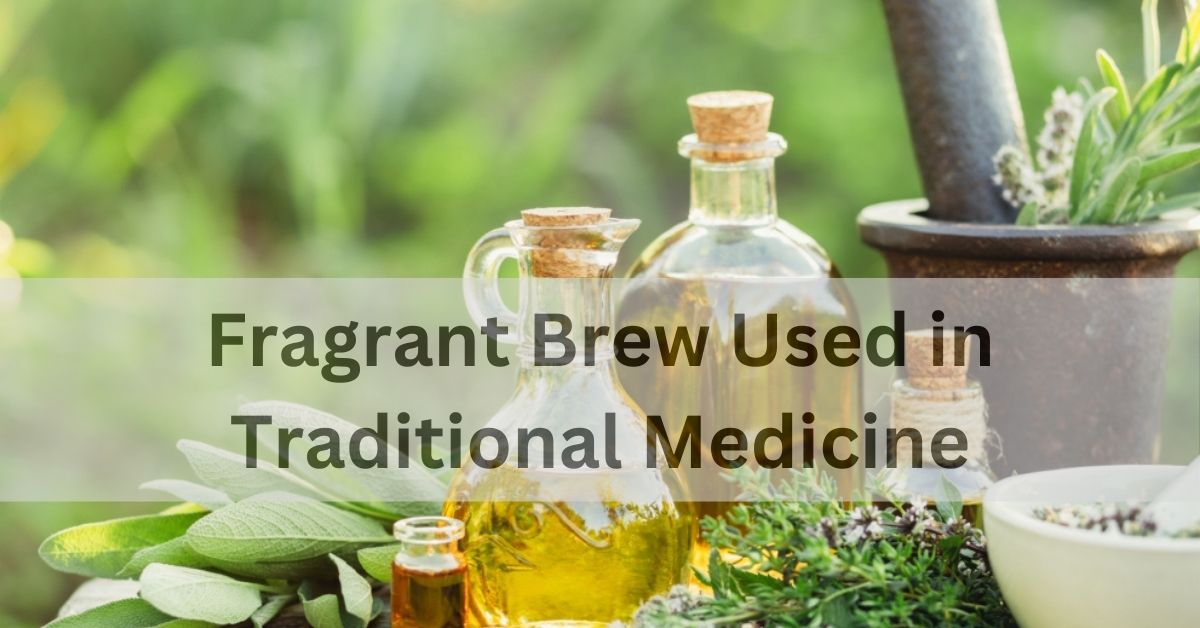Fragrant brews in traditional medicine combine ancient wisdom with modern health benefits, offering relaxation, immunity support, and digestive relief through diverse botanical blends.
In the realm of traditional medicine, fragrant brews have been cherished for centuries, valued not only for their delightful aromas but also for their profound therapeutic benefits. This article delves into the rich historical background, diverse health benefits, preparation techniques, and promising future of these aromatic infusions.
Introduction to Fragrant Brew Used in Traditional Medicine:

Fragrant brews, also known as herbal teas or tisanes, encompass a wide spectrum of beverages crafted from steeping various plant materials in hot water.
Unlike conventional teas derived from the Camellia sinensis plant, herbal brews feature a diverse array of botanicals celebrated for their medicinal properties.
From the calming effects of chamomile to the invigorating properties of ginger, each herb contributes uniquely to the holistic approach of traditional medicine.
Key Ingredients and Their Health Benefits:
Chamomile:
Chamomile, renowned for its gentle floral aroma, has long been prized for its calming effects on both the mind and body. It is widely used to promote relaxation, alleviate stress and anxiety, and aid in digestion.
Chamomile tea’s anti-inflammatory properties make it a soothing choice for those experiencing gastrointestinal discomfort or inflammation.
Peppermint:
Peppermint leaves, with their refreshing menthol flavor, are celebrated for their ability to relieve digestive issues such as indigestion, bloating, and gas.
Beyond digestive health, peppermint tea is known to provide natural relief for headaches, sinus congestion, and even muscle pain due to its muscle-relaxing properties.
Ginger:
Ginger root, revered for its spicy and warming qualities, serves as a potent remedy for nausea, motion sickness, and inflammation.
Ginger tea stimulates digestion by increasing bile production and gastric motility, making it effective for combating nausea and indigestion. Its immune-boosting properties and anti-inflammatory effects further enhance its therapeutic value.
Lavender:
Lavender, prized for its calming fragrance, is commonly used to promote relaxation, reduce stress, and improve sleep quality.
The aromatic compounds in lavender tea have been shown to have sedative effects, making it an excellent choice for those seeking relief from insomnia or anxiety-related sleep disturbances.
Turmeric:
Turmeric, characterized by its vibrant yellow color and earthy flavor, contains curcumin, a powerful compound with anti-inflammatory and antioxidant properties.
Turmeric tea supports joint health, aids digestion, and contributes to overall well-being by reducing oxidative stress and inflammation throughout the body.
Rose:
Rose petals, with their delicate aroma and subtle sweetness, offer not only aesthetic appeal but also significant health benefits. Rich in antioxidants, vitamins (such as vitamin C), and minerals (like calcium and magnesium), rose tea supports skin health, enhances mood, and promotes relaxation.
Historical Context and Cultural Significance:

The use of fragrant brews in traditional medicine is deeply rooted in the cultural practices and medicinal traditions of civilizations spanning ancient Egypt, Greece, China, India, and beyond.
Herbalists and healers throughout history have recognized the therapeutic potential of botanicals, integrating them into healing rituals, medicinal preparations, and daily wellness practices. These cultural foundations continue to influence contemporary approaches to holistic health and well-being.
Preparing and Enjoying Fragrant Brews at Home:
Crafting a fragrant brew at home is a simple yet rewarding process that allows individuals to tailor flavors and maximize therapeutic benefits.
Begin by selecting high-quality herbs and botanicals—whether dried or fresh—and use filtered water brought to the appropriate temperature to ensure optimal extraction of flavors and beneficial compounds.
Steep the herbs for the recommended duration to achieve desired strength, then strain and savor the aromatic infusion either plain or enhanced with natural sweeteners like honey or a splash of lemon juice.
Read Also: Rent a Car Insurance Maria Otosigna – Your Comprehensive Guide!
Testimonials from Individuals Who Have Benefited:
A Journey Towards Mindfulness:
Many individuals integrate the preparation and consumption of fragrant brews into their mindfulness practices, viewing the ritual of tea-making as an opportunity for mindfulness meditation.
This intentional approach fosters present-moment awareness, relaxation, and a deeper connection to the therapeutic benefits of herbal teas.
Boosted Immunity and Vitality:
Regular consumption of herbal brews is believed to strengthen the immune system, offering natural defense against common illnesses and contributing to overall vitality.
The vitamins, minerals, and antioxidants present in herbal teas support immune function and promote resilience against environmental stressors.
Natural Relief for Digestive Issues:
Herbal teas are renowned for their ability to soothe digestive discomfort, including bloating, indigestion, and cramping.
Chamomile, peppermint, and ginger teas, in particular, are valued for their digestive benefits and are commonly recommended as natural remedies for gastrointestinal disturbances.
Enhanced Respiratory Health:
Certain herbal brews, such as those containing peppermint, eucalyptus, and ginger, can support respiratory health by soothing coughs, clearing nasal congestion, and promoting easier breathing.
These teas provide natural relief from respiratory symptoms associated with colds, allergies, or respiratory infections.
The Future of Fragrant Brew Used in Traditional Medicine:

As interest in natural and holistic health practices continues to grow, fragrant brews are poised to play an increasingly significant role in contemporary health care and wellness regimens.
Advances in research and scientific validation are uncovering the specific health benefits and mechanisms of action of individual botanicals, paving the way for innovative product developments and broader accessibility.
Integrating these traditional remedies into mainstream healthcare systems offers promising opportunities to enhance community health outcomes and promote sustainable wellness practices.
Integrating Fragrant Brews into Contemporary Health Regimens:
Health professionals and wellness practitioners are increasingly recognizing the value of fragrant brews as complementary therapies within integrative health frameworks.
By combining traditional wisdom with evidence-based practices, healthcare providers can offer personalized strategies that optimize therapeutic outcomes and support holistic well-being.
Advancements in Research and Scientific Validation:
Ongoing research into the biochemical properties and therapeutic potentials of herbal ingredients is expanding our understanding of how fragrant brews can effectively address specific health concerns.
Scientific validation provides essential insights into the safety, efficacy, and optimal uses of herbal teas, informing evidence-based recommendations and enhancing consumer confidence in natural health products.
Innovation in Product Development and Accessibility:
Innovative formulations and convenient packaging options are making fragrant brews more accessible and appealing to a diverse consumer base.
From traditional loose-leaf teas to convenient tea bags and artisanal blends, consumers have access to a variety of options that cater to individual preferences, health needs, and lifestyle choices.
Community and Education:
Educational initiatives and community outreach programs are essential for raising awareness about the health benefits of fragrant brews in traditional medicine.
By empowering individuals with knowledge about herbal remedies, these initiatives promote informed decision-making, encourage sustainable health practices, and foster a deeper connection to natural healing traditions.
Potential Challenges and Considerations:
While fragrant brews offer numerous health benefits, it’s important to consider potential challenges such as sourcing high-quality ingredients, ensuring proper preparation techniques, and addressing individual sensitivities or allergies
Consulting with healthcare professionals or qualified herbalists can provide personalized guidance on integrating herbal teas into a health regimen safely and effectively.
FAQs:
1. What are fragrant brews used in traditional medicine?
Fragrant brews are herbal teas made from steeping various plants in hot water, valued for their therapeutic benefits and delightful aromas.
2. What are the health benefits of fragrant brews?
They offer diverse benefits such as relaxation (lavender), digestion aid (ginger), immunity boost (turmeric), and skin health support (rose).
3. How can I prepare fragrant brews at home?
Select high-quality herbs, steep in hot water, and strain after the recommended duration for a personalized aromatic infusion.
4. Why are fragrant brews important in cultural history?
They have been integral to ancient healing practices worldwide, reflecting cultural traditions and medicinal wisdom passed down through generations.
5. What are potential challenges when using fragrant brews?
Challenges include sourcing quality ingredients, proper preparation techniques, and individual sensitivities—consulting with experts ensures safe integration into health routines.
Conclusion:
In conclusion, fragrant brews used in traditional medicine embody a harmonious blend of ancient wisdom and modern insights. As interest continues to grow, these aromatic infusions stand poised to enrich lives, offering both delightful flavors and profound health benefits. Whether enjoyed for relaxation, immunity support, or digestive relief, herbal teas remain a timeless companion on the journey to holistic well-being.
Read Also:



